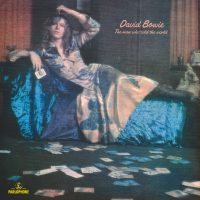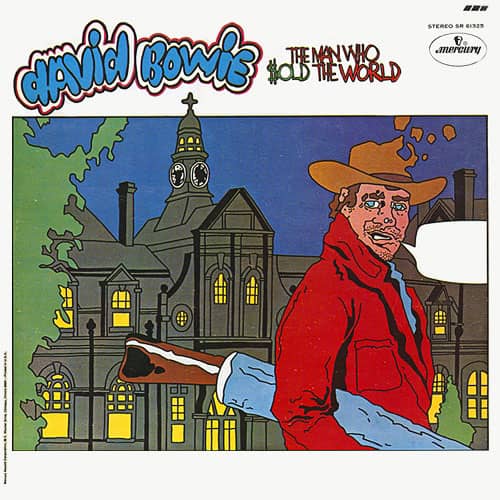 Written by: David Bowie
Written by: David Bowie
Recorded: 4 May 1970
Producer: Tony Visconti
Engineers: Ken Scott, Gerald Chevin, Eddie Offord
Released: 8 April 1971 (UK); 4 November 1970 (US)
Available on:
The Man Who Sold The World
Personnel
David Bowie: vocals, acoustic guitar
Mick Ronson: electric guitar, vocals
Tony Visconti: bass guitar, vocals
Ralph Mace: Moog synthesizer
Mick ‘Woody’ Woodmansey: drums, timpani
Recorded under the working title ‘Cyclops’, ‘Running Gun Blues’ opened the second side on David Bowie’s third album, The Man Who Sold The World.
The song is a commentary on the Vietnam War, and satirises the gung-ho mentality of many soldiers and cheerleaders for conflict.
I slash them cold, I kill them dead
I broke the gooks, I cracked their heads
I’ll bomb them out from under the beds
But now I’ve got the running gun blues
‘Running Gun Blues’ may have been written in response to the Mỹ Lai Massacre, the mass murder of hundreds of unarmed Vietnamese civilians by US troops in Sơn Mỹ village, South Vietnam. The war crimes of 16 March 1968 were initially covered up by the US Army, but became public knowledge in November 1969. The resulting global outrage helped increase public opposition to the war.
On ‘Running Gun Blues’, there are floor toms with echo on at the beginning, and you can hear me playing the tambourine. It was a dark subject: a soldier who has returned from war and he still has his gun, and he wants to kill people. It seems more relevant today than ever.
Spider from Mars: My Life with Bowie
When The Man Who Sold The World was released in the US in 1970, initial copies had a cartoon cover drawn by Bowie’s friend Michael J Weller. In the foreground of the picture was a cowboy figure clutching a rifle – a reference to ‘Running Gun Blues’.
A simple song in three keys, but nothing is simple about a Bowie song. Basically it’s a protest song. I love Mick’s bottleneck solo. The buzzy Moog is all over the place here. The ending is a sort of a play on the Overture of 1812 with cannon fire generated by the Moog. It was lots of fun to play.
Five Years (1969-1973) book
Angela Bowie later claimed that her husband wrote the lyrics one afternoon when he and Tony Visconti were frequently interrupted from their work to do press interviews. She also recalled the music composition being a group effort.
I witnessed and participated in David’s songwriting and composition but I never attended rehearsals and during rehearsals whatever input Ronno had was voiced and played then. ‘Running Gun Blues’ was one of those group songs and there were others but for the most part, David was fairly set about songs and how he wanted them arranged and recorded.
In the studio
‘Running Gun Blues’ was recorded at Trident Studios in London on Monday 4 May 1970, the same day that ‘Saviour Machine’ was also laid down. The session took place from 6pm to 10pm.
I definitely remember doing this at Trident, it was the last song recorded. Woody was also whomping those timpani drums, another first for him. The backing vocals were really fun to do, they were sung by Mick, David and me, a kind of precursor to Queen’s backing vocals. Do I detect some throat singing in there? Hmm. I love the instrumental. Mick’s harmonized guitar sound sweet and powerful. He certainly arranged that section.
Five Years (1969-1973) book
In 1990 a tape reel containing a number of Bowie recordings from 1970 was sold at Sotheby’s. Among the titles was ‘Cyclops’, which turned out to be an early version of ‘Running Gun Blues’ from the Trident session, with Bowie improvising guide vocals.
This was the first of many albums for which David did not have finished lyrics or even a song title. The emphasis was more on sound and attitude this time. Most songs had working titles, like ‘Running Gun Blues’ was called ‘Cyclops’. We were OK with this as a band, but as a producer I was getting some vocals recorded only at the last possible minute. This was often minutes before the final mix, a more than slightly tense situation.
Five Years (1969-1973) book



“Running Gun Blues” had to be about the My Lai massacre, as it had just become news in November of ’69 and the story was in all the major papers and magazines for months afterward. I think of this guy in particular as being someone David scrutinized: https://en.wikipedia.org/wiki/Varnado_Simpson